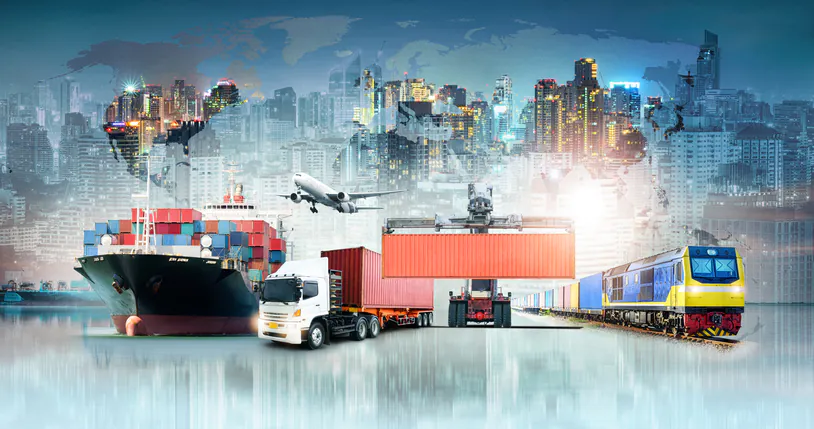Transportation has always been an essential part of our lives. Today, emerging trends in transportation equipment manufacturing are paving the way for a revolutionary change in the industry. These trends are influencing not just the transportation sector, but also the field of institutional furniture design. The synergistic interplay between these two sectors is creating an exciting new frontier in innovation.
Transport Sector Trends and Their Impact
The transport sector is a dynamic space, brimming with fresh ideas and technological advancements. These changes are not just transforming how we travel, but also how we design and manufacture. A notable trend is the increasing use of sustainable and recyclable materials, driven by the global push towards environmentally friendly practices.
Innovation in Transportation and Its Influence on Furniture Design
Just as the wheel revolutionized transportation centuries ago, today’s innovations are changing the face of the industry. From the advent of electric vehicles to the concept of autonomous driving, there’s a lot happening in the space. But how do these advancements tie into furniture design?
Consider the bike manufacturers. They are innovating with ergonomic designs, lightweight materials, and advanced manufacturing techniques. These innovations can inspire the design and manufacturing of ergonomic and lightweight furniture.
Understanding Transportation Equipment
Transportation equipment refers to any physical device involved in the movement of goods or people. From simple machines like bicycles to complex systems like airplanes and ships, all these fall under the umbrella of transportation equipment.
The North American Industry Classification System (NAICS) code for transportation equipment manufacturing is 336. This category includes industries that primarily engage in the production of equipment for transporting people and goods.
Future Trends in Transportation and Their Impact
- Autonomous Driving: Self-driving vehicles will redefine transportation, with potential implications for furniture design. Think of autonomous vehicles as mobile living spaces, requiring comfortable, functional, and aesthetically pleasing interiors.
- Electrification of Vehicles: As the world moves towards sustainable energy, electric vehicles are becoming more commonplace. This trend could inspire the use of sustainable materials in furniture design.
- Advanced Air Mobility: The idea of flying cars and drones for personal transport is gradually becoming a reality. This advancement may introduce vertical design elements in furniture design, leveraging vertical spaces for functionality and design.
Five Trends of Digital Transformation in Transportation and Logistics
Digital transformation is reshaping the transportation and logistics industry. Here are five key trends:
- IoT in Logistics: The Internet of Things (IoT) enables real-time tracking of goods, improving efficiency and transparency.
- AI in Transportation: Artificial Intelligence (AI) is facilitating autonomous vehicles and predictive maintenance, among other applications.
- Blockchain for Security: Blockchain technology can improve security and transparency in transactions.
- Big Data Analytics: Data analysis helps in optimizing routes and managing inventories effectively.
- Cloud Computing: Cloud-based solutions provide scalability and flexibility in operations.
Each of these digital transformations could influence furniture design, potentially leading to smart furniture that is interconnected and adaptable to user needs.
Growth in the Transportation Industry
The fastest-growing sector in transportation is the electric vehicle (EV) segment. The global push towards sustainability is driving this growth. As for the overall industry, the global transportation market is expected to grow
at a CAGR (Compound Annual Growth Rate) of 5.5% from 2021 to 2028. With the EV market’s rapid growth, we could see a parallel evolution in furniture design, focusing on sustainability and eco-friendliness.
Emerging Issues in Transport
As with any sector, transportation also faces several challenges. These include environmental concerns, infrastructure requirements, and the need for effective regulation. Each of these issues can influence institutional furniture design, prompting the industry to focus on sustainability, space optimization, and adherence to regulatory standards.
Modern Transportation Methods
Modern transportation has come a long way from the traditional modes. Here are five modern forms that are making their mark:
- High-Speed Rail: These trains, operating at top speeds, offer a fast and efficient mode of transport.
- Electric Vehicles: As mentioned earlier, electric vehicles are an emerging trend due to their eco-friendly nature.
- Hyperloop: This proposed mode of transportation involves pods traveling at high speeds in low-pressure tubes.
- Autonomous Vehicles: Self-driving cars and trucks are fast becoming a reality.
- Urban Air Mobility: The future may see more personal transport devices like drones and flying cars.
Each of these modern transportation methods influences the institutional furniture design industry by introducing new design concepts and manufacturing techniques.
The Largest Sector of the Transportation Industry
The motor vehicles and parts sector is currently the largest sector of the transportation industry. This sector includes companies involved in the production of cars, trucks, and other motor vehicles, along with vehicle parts. It plays a significant role in influencing trends in institutional furniture design, given its focus on comfort, functionality, and aesthetic appeal.



